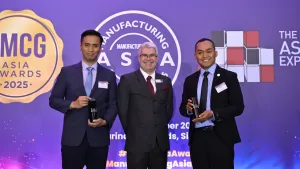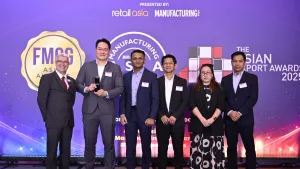Can Asia’s manufacturing supply chains support AI growth?
Infrastructure gaps slow AI progress in Asian supply chains.
AI is reshaping global supply chains, but in Asia—home to many of the world’s leading manufacturing hubs—the transformation is progressing unevenly. While 43% of Asia-Pacific CEOs are investing in AI-driven supply chain transformation, experts warn that outdated infrastructure, poor data utilisation, and skills shortages are keeping the region from realising its full potential.
“One of the major issues is really a lot of variability in the infrastructure that exists, both across countries in the region as well as within countries,” said Rupa Chanda, Director of Trade, Investment and Innovation Division at UN-ESCAP. “The demand for logistics and infrastructure is far outpacing the supply and the investments that are going in.”
Chanda cited multiple compounding factors: port congestion, a lack of multimodal transport, and limited freight corridors—along with complex topography, urban crowding, and real estate constraints. “If you look at the logistics sector, for instance, $4.4 trillion is required, and it's projected to grow to over $10.5 trillion. But the financing capabilities are not sufficient,” she said. “There needs to be a lot more investment in talent development… and in the latest technologies for tracking, traceability, and automation.”
Beyond infrastructure, manufacturers in Asia are not fully leveraging the data they already have. “Only 28% of manufacturers are using operational data effectively for continuous process improvements,” said Ong Tun Kim, General Manager of Manufacturing Solutions at IBM. “Fewer than one in five have real-time access to important manufacturing data across the enterprise.”
According to Ong, more than 90% of manufacturing data goes unused—despite being rich in insights about machine performance, supply trends, and logistics. “Most manufacturers lack the AI infrastructure to extract such actionable insights,” she noted, highlighting the critical need for digital readiness and data literacy in factories.
Meanwhile, urban congestion is driving up costs and delays. “Extreme urbanisation created very inefficient traffic models,” said Easwaran Subramanian, Supply Chain and Network Operations Leader at Deloitte Asia Pacific. “Given the pace of growth, travel times have increased substantially, and that is hindering very efficient and cost-effective logistics.”
Subramanian added that rural regions are frequently excluded from supply chain investments. “While supply chain investments have been made, it’s not resulted in holistic deployment of those supply chain models in any country,” he said.
Amidst these pressures, Asia’s dominance in manufacturing faces emerging competition from regions like Latin America, which benefit from proximity to North America and less reliance on China.
To remain competitive, manufacturers need to localise supply chains, modernise infrastructure, and develop future-ready talent, she said.
Ong advised firms to “focus on use cases that are scalable and relevant to every industry” and to “accelerate AI adoption for operational efficiencies” like predictive maintenance and demand forecasting.
For Subramanian, Asia’s long-term advantage depends on ownership of innovation. “Asia should move away from being a converter of the world to being an owner of the value chain,” he said. “The servicification of manufacturing—powered by Gen AI and agentic models—will be the comparative advantage of the future.”












